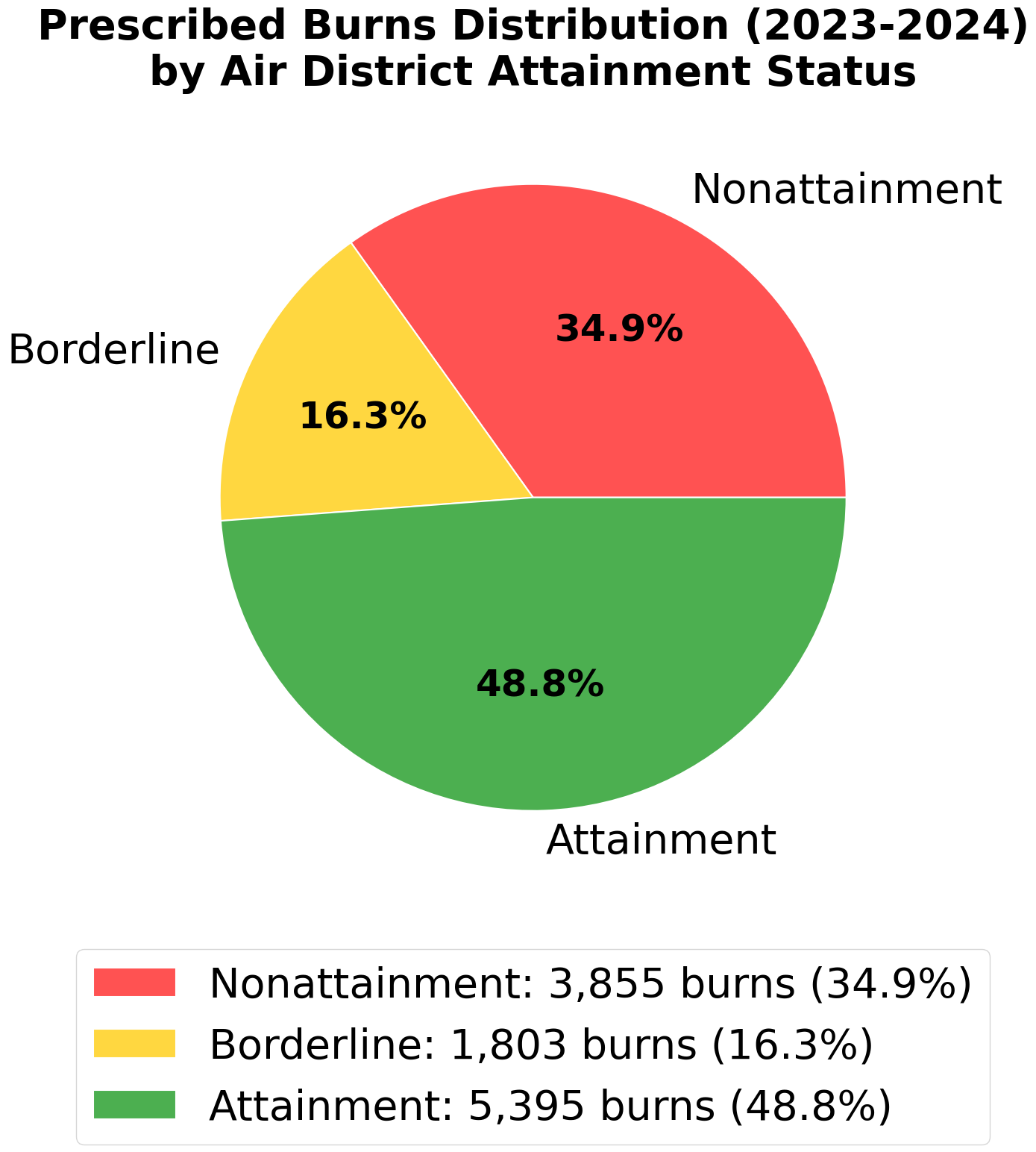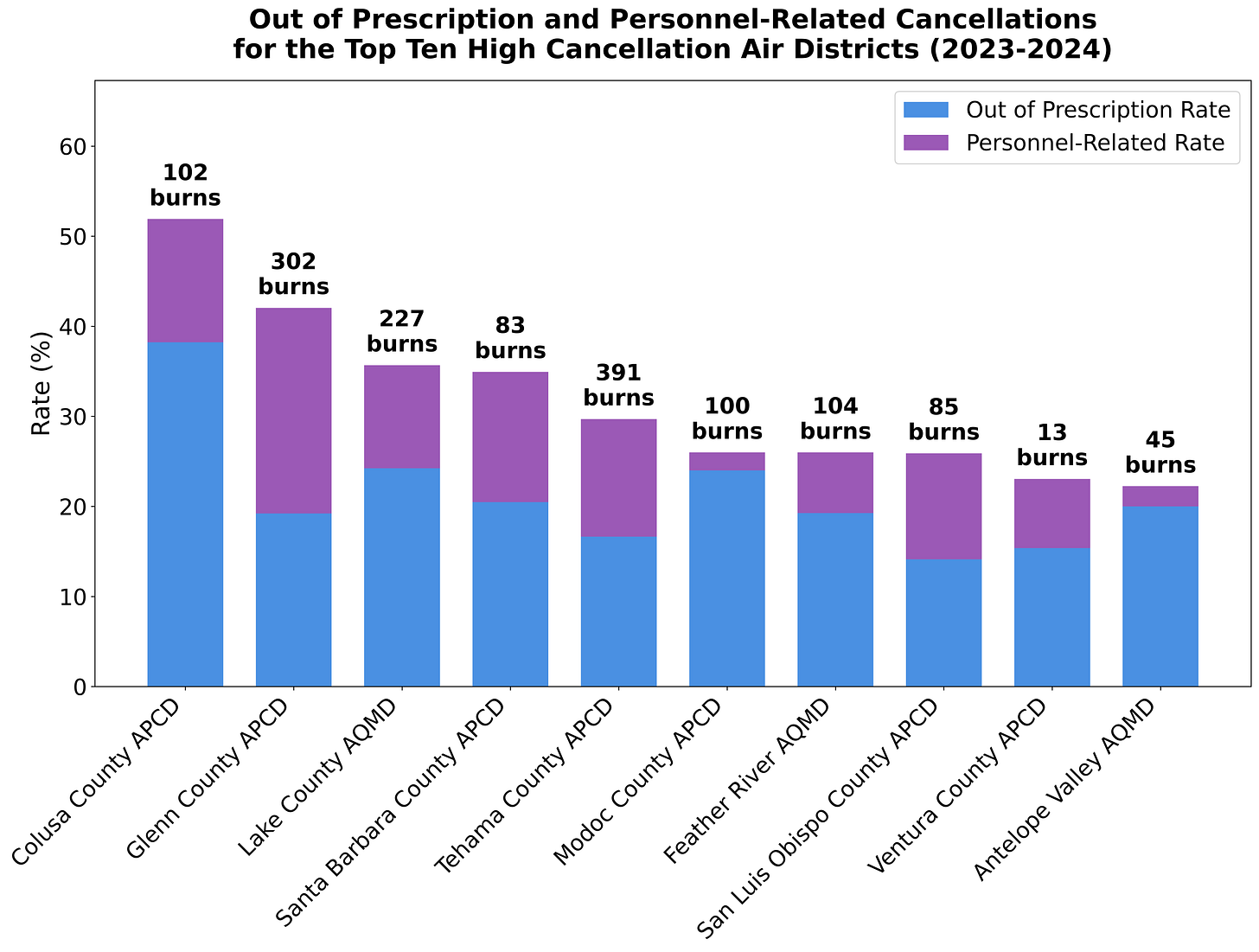Balancing Fire and Air, Part Two: Responding to the Governor’s State of Emergency Proclamation
As catastrophic wildfires increasingly threaten California, how can the state significantly expand its use of prescribed burns – a key mitigation strategy – while also meeting stricter federal demands
In response to the devastating firestorms in Los Angeles County at the start of this year, California Governor Gavin Newsom recently proclaimed a State of Emergency to expedite fuels reduction projects statewide. To help guide the implementation of Governor Newsom's proclamation to fast-track wildfire prevention projects, our team at Stanford University's Climate and Energy Policy Program (CEPP) recently submitted a policy brief presenting data-driven recommendations to address current challenges to scaling up prescribed fire in California.
The Challenge: Stricter Air Quality Standards Meet Urgent Wildfire Prevention
The Governor’s emergency declaration came at a pivotal moment, as national air quality standards for PM2.5 concentrations were revised downward to 9 µg/m³—a substantial reduction from the previous 12 µg/m³ standard. This tightening of air quality regulations is resulting in a growing challenge for prescribed burn programs, as detailed in the previous post of this blog series, especially when our analysis reveals that more one-third (34.9%) of California's prescribed burns in 2023-2024 occurred in regions that will likely be designated as nonattainment1 areas under the revised standard (see Figure 1).

CEPP’s Policy Brief: What the Data Shows
Our research team at the Climate and Energy Policy Program, in collaboration with staff from the California Air Resource Board (CARB), analyzed recent data from the Prescribed Fire Information Reporting System (PFIRS). The preliminary findings in our policy brief reveal both challenges (see Figure 2) and opportunities:
While prescribed burn ignitions increased 2.9% from 2023 to 2024, completion rates remain at only 49.9%.
Average burn sizes decreased from 42.6 acres in 2023 to 28.8 acres in 2024, perhaps as a result of an exceptionally wet winter alongside cool spring and early-summer conditions in the former year.
Only one-third of acres burns (33.5%) were completed in high risk firesheds, as designated by the US Forest Service.
Weather, fuel conditions, and personnel shortages caused cancellation of approximately 21.3% of scheduled burns across both years.
Significant regional disparities exist in burn success rates and permissive burn days.
Our data shows that vegetation type also matters: landscapes with Chamise Chaparral, Non-native Grassland, and Sierran Mixed Conifer Forest as the most common vegetation type faced some of the highest cancellation rates (31.0-35.7%).

Our Recommendations
To advance prescribed fire implementation while navigating stricter air quality regulations, we recommend:
Creating a year-round dedicated workforce through CAL FIRE to implement prescribed burn programs consistently and reduce the occurrence of personnel- or logistics-related cancellations. An expanded workforce would also allow prescribed fire to occur during a wider window when conditions are good—for instance, in the summer when agencies currently prohibit prescribed fire as they shift personnel towards wildfires.
Prioritizing strategic fuel treatment in high-risk areas nearer to population centers.
Developing a cross-agency database of fuel readiness to support coordinated decision-making.
Applying successful methods from high-performing districts to areas with greater prescription-related challenges.
Updating burn prescriptions based on empirical success rates by vegetation type.
Implement comprehensive smoke management with monitoring and timely community alerts.
Moving Forward
The Governor's Emergency Declaration offers a unique opportunity to test innovative approaches for prescribed fire implementation while navigating stricter air quality standards. We've submitted these recommendations in response to the call from the California Natural Resources Agency and California Environmental Protection Agency.
For more information or to provide input on beneficial fire expansion, email BeneficialFireInput@resources.ca.gov or direct questions about the State of Emergency to FuelsReductionSOE@resources.ca.gov.
Jessica Yu is a Research Scientist studying the intersection of human and environmental health at the Climate and Energy Policy Program. With a focus on interdisciplinary solutions, her research addresses the public health impacts of wildfire and prescribed fire smoke.
Samuel Hudgens is a Wildfire Legal Fellow at the Climate and Energy Policy Program. His research focuses on the legal framework that governs the use of prescribed fire and the interaction between wildfire and the regulation of insurance.
Under 42 U.S.C. § 7407, the Clean Air Act requires states to report pollutant levels to the EPA. The EPA then measures these levels against the NAAQS and assigns areas with pollutant levels below the NAAQS standards for that particular pollutant with an “attainment” designation and assigns areas that have exceeded the NAAQS standards for that particular pollution with a “nonattainment” designation.






